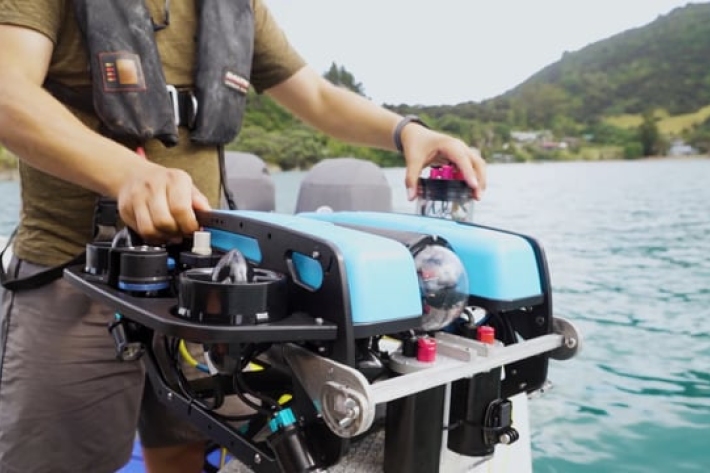-

Retired scientist completes four-decade-long bibliographic work
Media release21 September 2021After 40 years of work, retired NIWA fisheries scientist Larry Paul has just published a 793-page bibliography of references to New Zealand marine fishes. Everything known and ichthyological that appears in our waters is referenced in the voluminous tome. -
Fabulous Fiordland
An interactive guide to the marine biota of the Fiordland (Te Moana o Atawhenua) Marine Area. -

Hauraki Integrated Land-Water Modelling
Research ProjectThe Inner Hauraki Gulf/Tīkapa Moana ecosystem is facing proliferations of algae, de-oxygenation, reduced pH (acidification), reduced water clarity, and muddier sediments arising from historical and future land-derived contaminant inputs. -

Surveying scallops populations with artificial intelligence
Developing innovative, non-invasive alternatives for surveying scallops and harvesting. -

The fine art of forecasting
Feature story04 August 2021Susan Pepperell looks at how high-resolution forecasting is driving sharper decision making – from deep in the back country to the finish line of the America’s Cup. -

Investing in our data
Feature story04 August 2021NIWA Chief Executive John Morgan looks at the growing role data technology plays in environmental research. -

Supercharging the view from above
Feature story04 August 2021From the rocky shores of Wellington’s South Coast to the icy waters of Antarctica, NIWA scientists are combining drone technology with advanced computer skills to map, measure and analyse the natural environment as never before. Campbell Gardiner explains. -
The largest flood flow ever measured
Media release29 July 2021Flood flows on the Buller River this month were the largest of any river in Aotearoa New Zealand in almost 100 years, NIWA measurements show. -

Powering diversity in the Ross Sea
Studying the mesopelagic in the Ross sea -
Study discovers microplastics in New Zealand’s seabed
Media release16 July 2021A pilot study carried out by NIWA and the University of Auckland has found microplastics in samples collected from the seafloor in the Marlborough Sounds. -

Tsunami generated by underwater volcanoes
Research ProjectMarsden-funded research investigating how erupting volcanoes can cause deadly and damaging tsunamis. -

New biodiversity memoir on the primnoid corals of New Zealand
Feature story17 June 2021A group of gorgonian octocorals that provide shelter for fish and invertebrates in the deep sea is the subject of NIWA’s latest Biodiversity Memoir.


